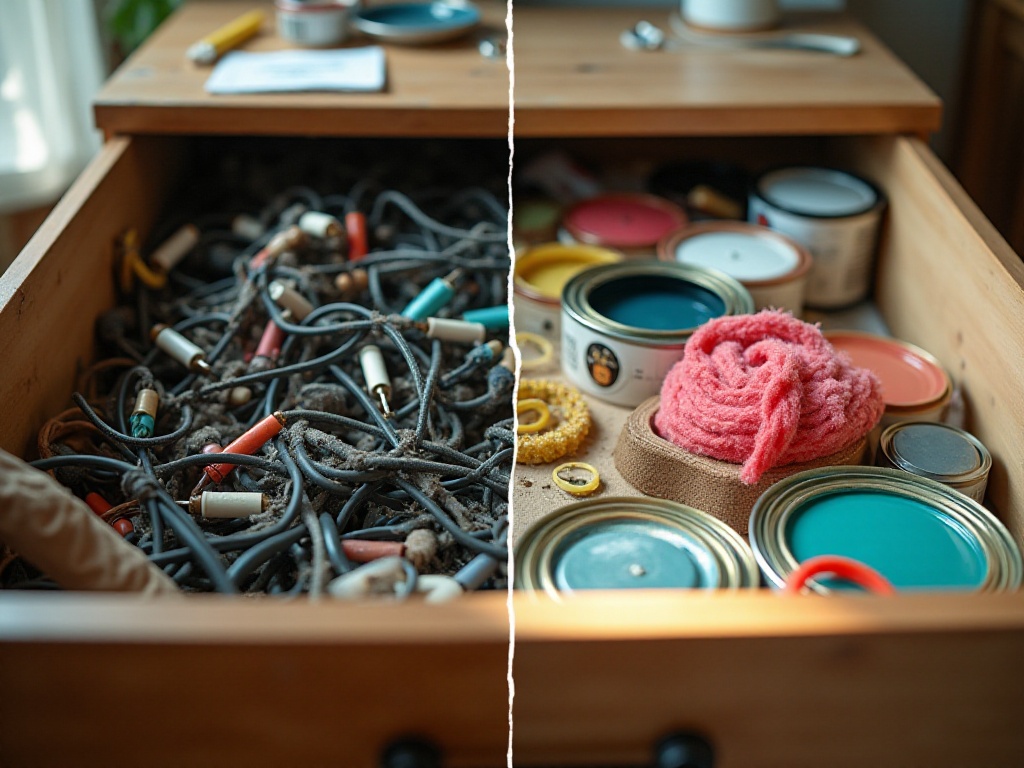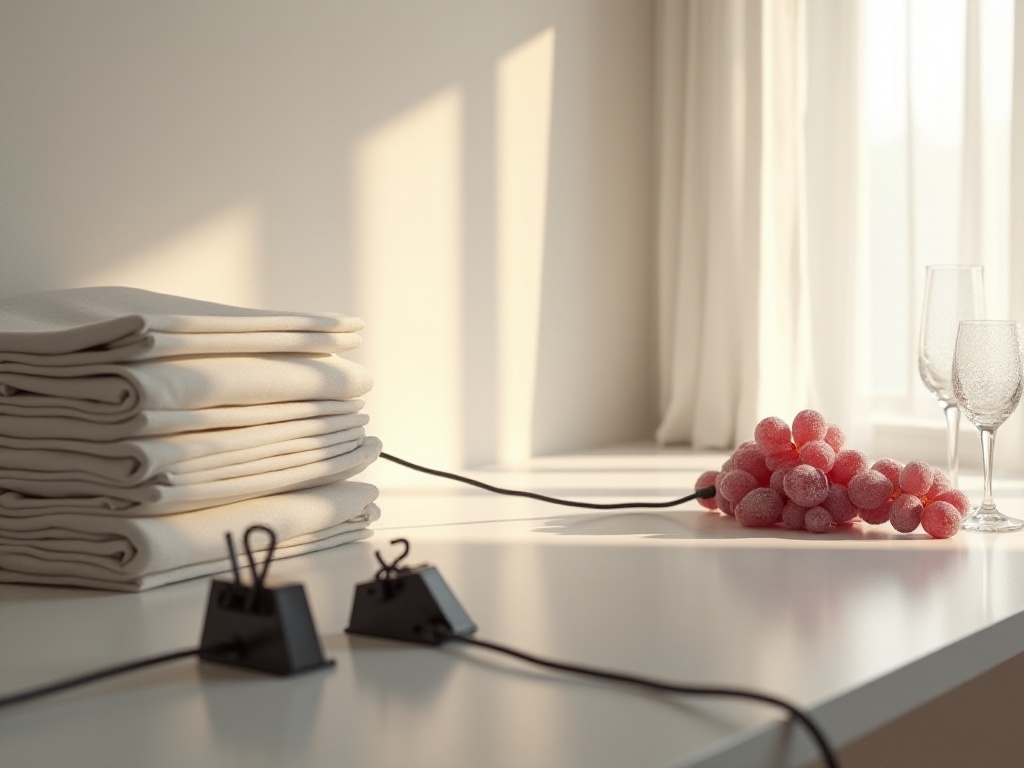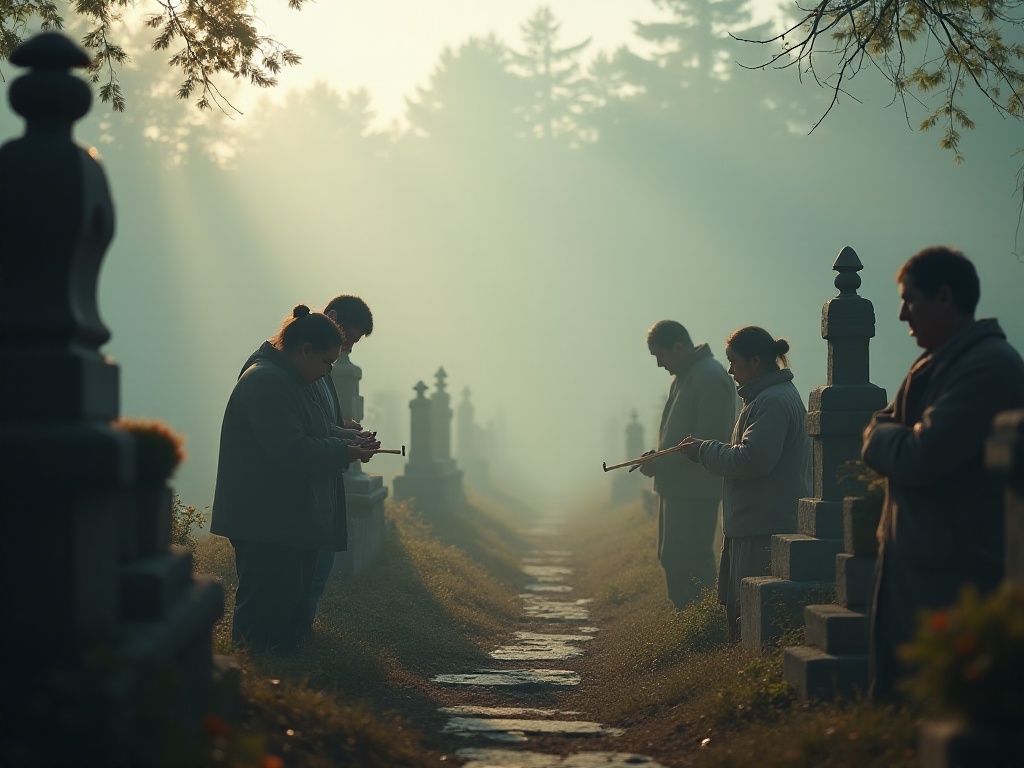Introduction
Lying in bed scrolling through my phone, looking at those stunning organization photos, I fell into deep thought. I remember when I first started working, my tiny room of about 150 square feet was packed with clutter, and finding anything felt like an archaeological dig. Work stress was already overwhelming enough, and coming home to chaos made life truly miserable. As someone who used to be a "organization rookie" surrounded by clutter, I deeply understand this feeling. After years of exploration and practice, I finally found an organization system that works for me. Today I'd like to share my journey and practical tips.
Facing Reality
To be honest, before starting to organize, I was extremely resistant. Whenever I saw those perfectly organized, orderly photos, it always felt like an unattainable dream. Until last Chinese New Year, when I spent two whole hours searching through everything for an important document. At that moment, I suddenly realized it was time for a change.
I started tracking how much time I spent looking for things each day, and the results shocked me: an average of 15-20 minutes daily. It might not seem like much, but when I calculated it, it added up to 91 hours per year - nearly 4 days wasted! That's enough time to binge-watch a popular TV series. More importantly, the anxiety and frustration from searching for things seriously impacted my quality of life.
One day after work, standing at my doorway looking at the mess in my home, I felt extremely tired. I started reflecting: why did I hoard so many things? Was I afraid I might need them later? Or was I just reluctant to let go of the money I'd spent? Actually, often we accumulate things not because we need them, but because of inner insecurity.

The Path to Minimalism
After deep research, I discovered that the core of organization isn't about buying lots of beautiful storage containers, but learning to let go. Before starting to organize, I spent a whole week creating a detailed action plan. First, I categorized all items in my home into three types: frequently used, occasionally used, and rarely used.
This process led to an amazing discovery: based on usage frequency over the past year, about 80% of items fell into the "rarely used" category. Like those electronic accessories kept "just in case," clothes saved for "after losing weight," magazines and books set aside for "when I have time." These things not only take up space but also create psychological burden.
I began to wonder: why do we habitually hoard things? Perhaps it's because we connect objects with memories and emotions. But do we really need physical items to maintain memories? Aren't the truly important memories already deeply engraved in our hearts?
Practical Guide

Clothing Organization
I remember the first time I committed to organizing my closet: when I opened the door, clothes avalanched out like snow. I spent an entire weekend wrestling with these clothes. Later, I found a particularly useful method on an organization expert's blog: hang all clothes backwards, then rehang them properly after wearing. This method was a lifesaver!
After six months of practice, I discovered I actually only wore a few pieces regularly. Those clothes that were "never worn after buying" or "waiting to wear after weight loss" occupied the most closet space. Through this reverse hanging method, I cleared out nearly 40% of my clothing space. Most amazingly, I can't even remember what those clothes I gave away or donated looked like now. Doesn't this prove they weren't important to me at all?
During the organization process, I also developed some practical tips. For example, categorizing clothes by occasion: work wear, home wear, sportswear, etc. Each category has a fixed location, so there's no need to search everywhere when changing clothes. For folded clothes, I adopted the vertical storage method, which not only saves space but also allows you to see all clothes at a glance.
Seasonal clothing organization is also key. I do a thorough organization during season changes, storing off-season clothes in vacuum compression bags. But note that clothes must be clean before storage, not only to protect them but also to prevent mold and odors.

Kitchen Organization
The kitchen is definitely the most challenging space for organization, as it needs to store various ingredients and seasonings while considering convenience of use. After multiple attempts and improvements, I developed an effective system.
First is seasoning organization. My secret is: zone seasonings by frequency of use. The most commonly used seasonings, like salt, soy sauce, and cooking wine, are placed on the spice rack near the cooking area. Less frequently used spices and seasonings can be stored further away. Through this method, I reduced the time spent finding seasonings from an average of 2 minutes to 15 seconds, greatly improving cooking efficiency.
Next is cookware and tableware organization. I adopted a "horizontal layering, vertical zoning" method. Frequently used cookware is placed on lower, easily accessible levels, while less used items are stored above. Tableware is stored by purpose, like breakfast items together, making hectic mornings less chaotic.
For snacks and dry goods, I use transparent sealed containers. This not only maintains freshness but also makes inventory visible at a glance. I also label each container with the item name and expiration date to avoid accumulating expired food.

Book Organization
As a book lover, book organization was my biggest headache. I used to have a bad habit: buying books I liked but rarely opening them a second time. As a result, my bookshelf was full of books, but few were truly valuable.
Now my method is: only keep books I genuinely want to read again, and either donate others to libraries or convert them to digital versions. This decision wasn't easy, as each book carried the excitement and joy of its purchase. But when I actually started, the process was surprisingly liberating.
Through this method, my bookshelf space reduced by 60%, but reading efficiency actually increased. Because now, every book on my shelf is carefully selected and worth rereading and savoring. I've also developed a habit: for every new book I finish, I must remove an old one, maintaining a constant bookshelf capacity and avoiding falling back into the book hoarding cycle.
For study materials and work documents, I chose to go completely digital. I bought an e-reader, which not only saves space but allows reading anywhere, making commute time more productive. For necessary paper documents, I regularly organize and archive them while creating digital backups.

Continuous Improvement
Organization isn't something achieved overnight; it requires continuous adjustment and optimization. I've developed a habit of spending one weekend each month checking and adjusting my organization system. This process isn't just about organizing items, but also reviewing and summarizing life.
In daily life, I also observe which areas need organizational improvement. For example, I noticed the entryway often accumulated deliveries and miscellaneous items, so I specifically designed a "transition zone" for temporarily storing items needing attention. After returning home each day, I spend some time dealing with these items to prevent them from becoming new clutter.
Many might say this seems troublesome, but compared to the daily frustration of searching for things, this time investment is truly worthwhile. Moreover, when your life becomes orderly, this organization habit becomes enjoyable, like tending to a beloved garden.
Insights Gained
Through this year-plus of minimalist organization practice, my life has undergone tremendous changes. The biggest insight is: organization isn't just about arranging items, but about organizing life. When your living space becomes neat and orderly, your mindset follows suit.
I used to think buying new things would make life better, but now I've discovered that truly improving life quality comes from letting go of attachment to possessions. When we learn to let go of unnecessary things, we actually create more space to enjoy life's beauty.
This process has also taught me gratitude. Those items I gave away might find new value in others' hands. And I find happiness in this sharing. It turns out, letting go is also a form of happiness.

Conclusion and Future Outlook
Organization is an ongoing process; don't expect instant results. The important thing is to start acting, even if it's just ten minutes daily, it's better than doing nothing. Like now, my first action after returning home from work is putting everything back in its place, which has become part of my life.
People often say "life needs ritual," but I think what's more needed is "life's order." When your living environment becomes orderly, you'll find life's quality improves accordingly. Moreover, a tidy environment brings more creativity and productivity.
Now, I can leave home on time every morning because I don't need to search for things; work efficiency has improved because my desk is always tidy; and my mood is better because life has fewer unnecessary troubles.
Oh, if you want to start your organization journey, try starting with the simplest thing: tonight when you get home, try organizing one drawer. You'll discover change is actually simple, and this might be your first step to changing your life. Remember, organization isn't the goal; making life better is our ultimate pursuit.
In this era of material excess, learning to let go and returning life to simplicity might be the best gift we can give ourselves. When you truly begin this journey, you'll discover that simplicity can be beautiful.




